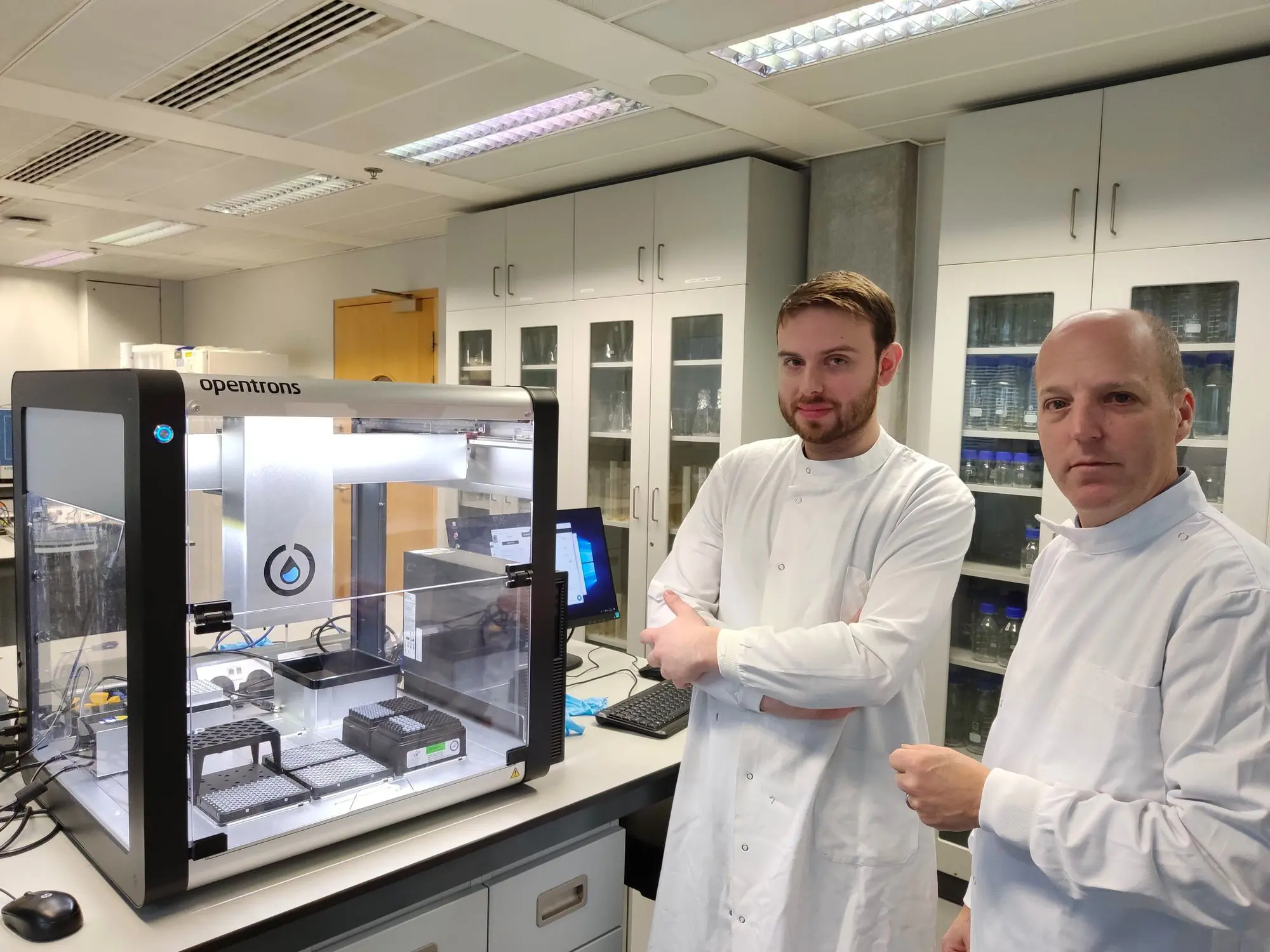
Basic DNA assembly is the process of joining DNA fragments to create a specific sequence, often using recombinant DNA technology. Its purpose is to combine elements like promoters, coding sequences, and regulatory regions in targeted ways. This allows researchers to study gene function, create genetically modified organisms, or engineer pathways for industrial applications like biofuel production, pharmaceuticals, and synthetic biology.
Automating DNA assembly is a critical advancement in Synthetic and Molecular Biology, allowing researchers to efficiently construct complex DNA sequences for building biological systems. Automation accelerates the process of multi-part DNA assembly, reducing manual errors and increasing reproducibility. It also enables scientists to explore more extensive genetic design spaces, fostering innovation and expanding possibilities in areas like gene editing, synthetic biology, and biotechnology.
Benefits of Automation:
Opentrons automation has transformed the process of assembling DNA constructs, enabling scientists to build biological systems more efficiently. The BASIC (Biopart Assembly Standard for Idempotent Cloning) method simplifies and speeds up DNA assembly, making it easier and more reliable. When combined with the Opentrons OT-2 liquid handling robot, the system—known as DNA-BOT—reduces the complexity of DNA assembly while ensuring high accuracy. This automation allows researchers to focus more on designing biological systems rather than the technical challenges of DNA assembly, leading to increased productivity and exploration.
The integration of BASIC with the open-source Opentrons platform has made lab automation more affordable and efficient. The DNA-BOT system has proven effective for creating a large number of accurate DNA constructs, with applications in areas like biosynthetic pathway research and the development of complex biological systems. The system continues to evolve, with new features expanding its capabilities, making synthetic biology and DNA assembly accessible to a wider range of scientists and researchers.

How Imperial College used BASIC and an Opentrons OT-2 to build an accurate, low-cost, automated DNA assembly platform for synthetic biology.
Basic DNA assembly is critical in various molecular biology workflows, including:
Basic DNA assembly can be challenging due to several factors:
The OT-2 is a bench-top liquid handler designed to be accessible and flexible enough to automate many common applications.
Our team of experts can help figure out if automation is right for you. Book a virtual demo to discuss your workflow needs with an expert.